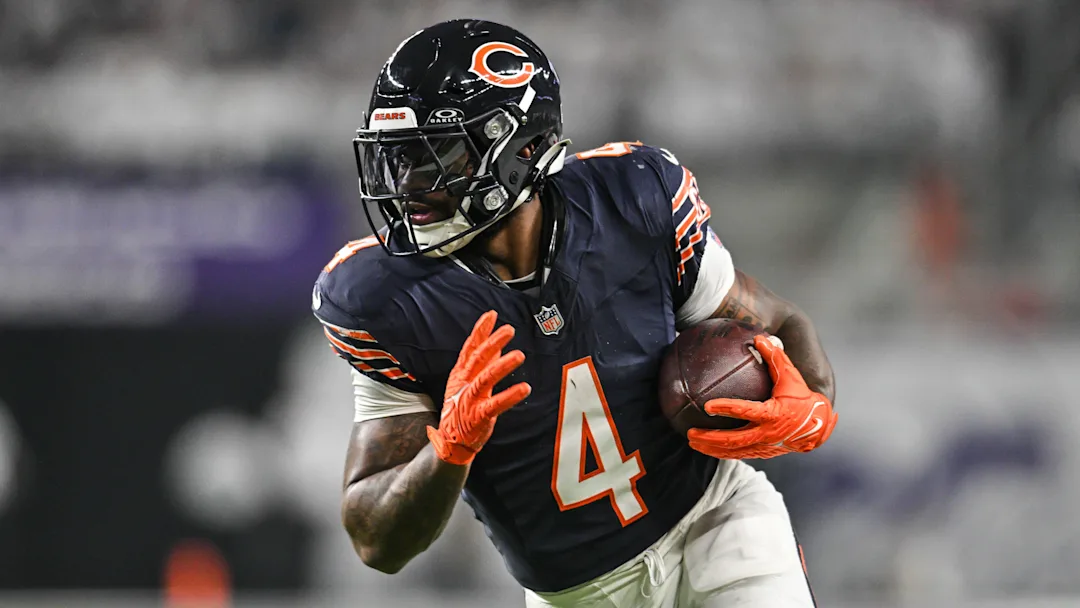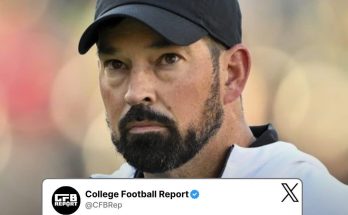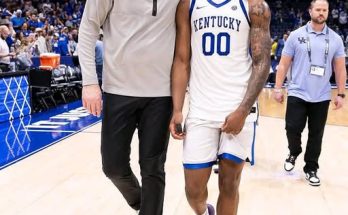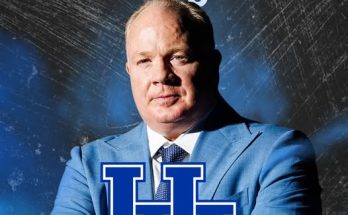The Chicago Bears entered the 2025 NFL season with renewed hope and expectations. After years of rebuilding and searching for the right pieces to revitalize their offense, the Bears and their fans were eager to see tangible progress. However, a recent comprehensive NFL ranking released by a leading analytics group has thrown cold water on those aspirations. The ranking paints a brutal and unforgiving picture of the Bears’ offensive performance in 2025 — and it’s not flattering.
The Chicago Bears offense, once the proud heart of one of the league’s most storied franchises, is now struggling to find its identity and effectiveness in an increasingly competitive NFL landscape. The new rankings place the Bears’ offense near the bottom of the league, highlighting numerous systemic issues, lack of cohesion, and glaring talent gaps that are hindering the team’s ability to move the chains and score consistently.
For a franchise with such a rich history and passionate fanbase, these rankings are a stark reality check. It’s a reminder that success in the NFL is brutally difficult to achieve, and the Bears have a long road ahead to regain offensive respectability.
A Statistical Overview That Speaks Volumes
The rankings were derived from a thorough analysis of key offensive metrics across all 32 teams, including points per game, yards per play, third-down conversion rates, red zone efficiency, and turnovers. Chicago’s offense ranked in the bottom five in nearly every category.
One of the most glaring statistics is the Bears’ points per game, which hovers around a dismal 16.4, ranking them 30th in the league. This figure underscores an offense that is struggling not only to sustain drives but to finish with touchdowns. In today’s NFL, where offenses are often prolific and fast-paced, scoring less than 20 points per game makes winning nearly impossible.
Chicago’s yards per play are similarly underwhelming. With an average of just 4.8 yards per play, the Bears offense lacks explosiveness and consistency. League leaders average over 6.5 yards per play, demonstrating a stark contrast between the Bears and elite offenses. This lack of efficiency has forced the Bears to rely heavily on field goals rather than touchdowns, further hurting their scoring output.
The Bears also rank 31st in third-down conversions, managing to convert on only 29% of opportunities. Third downs are pivotal moments in a game; failing to convert means stalling drives and handing the ball back to opponents far too often. The inability to sustain drives has cascading negative effects on both the offense and the defense, often resulting in a tired defensive unit that struggles to keep pace.
Turnovers remain another significant problem. Chicago’s offense has fumbled or thrown interceptions at an alarming rate, ranking 28th in turnover differential. Turnovers kill momentum and directly translate into lost scoring opportunities, which has further exacerbated the Bears’ offensive struggles.
The Quarterback Conundrum
At the heart of the offensive woes is the quarterback situation. The Bears, long searching for a franchise signal-caller, have not found the stability needed to build a reliable offense around.
In 2025, the Bears entered the season with a young quarterback who showed flashes of promise but has largely struggled with consistency and decision-making under pressure. This instability at the most important position on offense has been a critical factor in the team’s poor offensive ranking.
The quarterback’s passer rating sits near the bottom of the league, with a completion percentage hovering around 58%, below the league average of 64%. His struggles in reading defenses and avoiding turnovers have contributed heavily to the team’s inefficiency. Additionally, the Bears’ offensive line has failed to provide adequate protection, leading to an increased number of sacks and hurried throws, further undermining the quarterback’s performance.
The absence of a veteran presence or a reliable backup quarterback has also hampered offensive continuity. Injuries and inconsistent play have forced the coaching staff into difficult decisions, often leaving the quarterback underprepared or forced into high-risk situations.
Running Game — A Lost Opportunity
The Bears have historically prided themselves on a strong running game, but in 2025, their rushing attack has been pedestrian at best. The team ranks 27th in rushing yards per game, averaging just under 85 yards. This lack of a dynamic ground game has made the offense one-dimensional, allowing opposing defenses to focus on the pass rush and coverage schemes.
The leading rusher for the Bears has struggled to break tackles and find open lanes, often running behind a line that has shown little ability to create holes. This has resulted in a lack of explosive plays and predictable play-calling, with the Bears often settling for short gains or passing on early downs to compensate.
Moreover, the Bears’ inability to run effectively has hurt their clock management and ability to control the pace of the game. In close contests, the lack of a credible rushing threat has meant the offense cannot sustain long drives or eat up valuable clock time, putting additional pressure on their defense.
Receiving Corps Falling Short
The Bears’ receiving corps has not provided the kind of dynamic playmakers needed to elevate the offense. The rankings show that the team’s top receivers rank near the bottom of the league in yards after catch (YAC), receptions per game, and big-play ability.
Wide receivers on the team have struggled with drops and route-running, limiting the quarterback’s confidence in throwing the ball. The absence of a true number-one receiver has made it difficult for the Bears to stretch the field and force defenses to respect deep threats.
Tight ends and running backs have not compensated either, as their contributions in the passing game have been minimal. This lack of versatility has allowed opposing defenses to crowd the line of scrimmage and neutralize the Bears’ short-to-intermediate passing game.
Coaching and Scheme Questions
Offensive struggles rarely occur without some reflection on coaching and scheme design, and the Bears are no exception. The 2025 offensive coordinator has been criticized for unimaginative play-calling, particularly in critical situations such as third downs and red zone opportunities.
The scheme seems out of sync with the personnel’s strengths. Many analysts point out that the Bears continue to run plays that require a quick release and a mobile quarterback, despite the limitations of their young signal-caller. This mismatch has led to frequent breakdowns and inefficient execution.
Additionally, the offensive line coach has faced scrutiny due to the poor protection statistics and lack of run-blocking success. The offensive line’s inability to hold up against pass rushers is one of the primary reasons the quarterback has not been able to develop rhythm or trust in the offense.
Impact on Team and Fans
The offensive struggles have had a significant impact on the overall team performance. The Bears’ defense, which has shown moments of promise, has been put in difficult positions due to the offense’s inability to sustain drives or score points. Time of possession often leans heavily in favor of opponents, leading to fatigue and breakdowns late in games.
From a fan perspective, the offense’s lackluster play has been a source of frustration and disappointment. Chicago fans, known for their loyalty and passion, expected more progress after offseason moves and a full offseason to develop young talent. Instead, they have been treated to uninspiring performances that leave more questions than answers.
Ticket sales and viewership have seen a noticeable decline, with many fans expressing concern about the team’s direction. The front office is under pressure to address these issues swiftly if the Bears hope to restore faith and competitiveness.
What Needs to Change?
The brutal ranking highlights several areas where the Bears must improve to climb out of the offensive cellar:
Quarterback play: Finding stability at quarterback is paramount. Whether through drafting, developing the current young quarterback, or acquiring a veteran presence, the Bears need a reliable leader on offense.
Offensive line: Improvement in pass protection and run blocking is critical. Investments in coaching, player development, and potentially free agency are necessary to protect the quarterback and open running lanes.
Skill positions: The Bears must add playmakers at wide receiver and tight end who can create separation, make contested catches, and generate yards after catch. This will open up the offense and keep defenses honest.
Scheme adjustments: The coaching staff needs to design a scheme tailored to their personnel’s strengths, emphasizing quick reads, high-percentage throws, and a balanced run-pass attack.
Turnover reduction: Ball security and decision-making must improve dramatically. Protecting the football is fundamental to sustaining drives and winning games.



